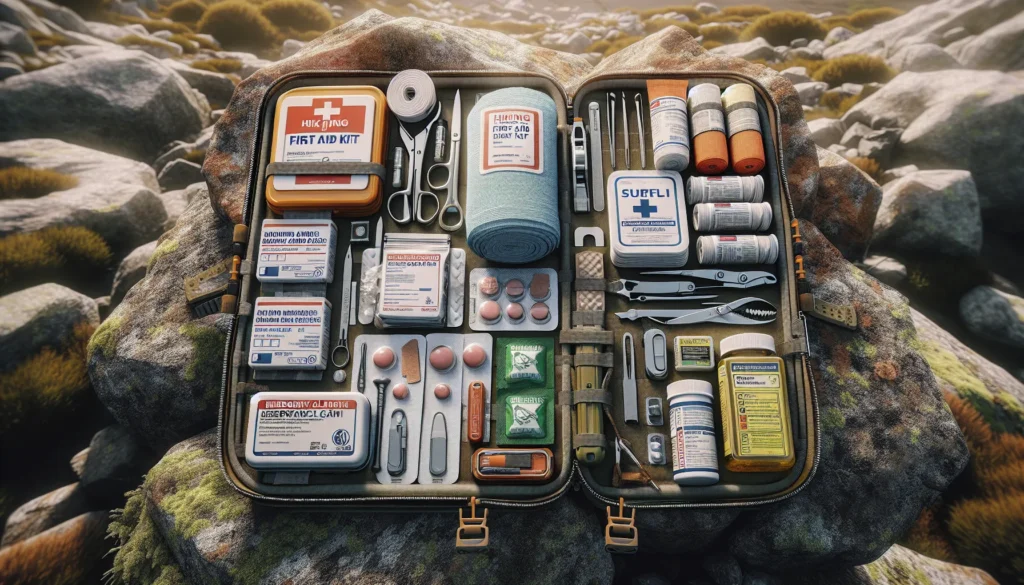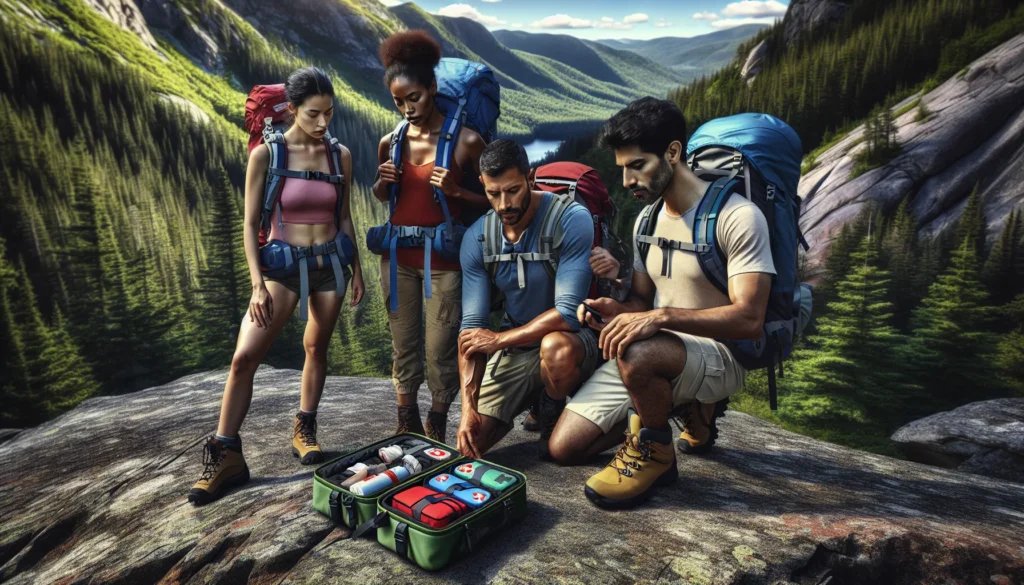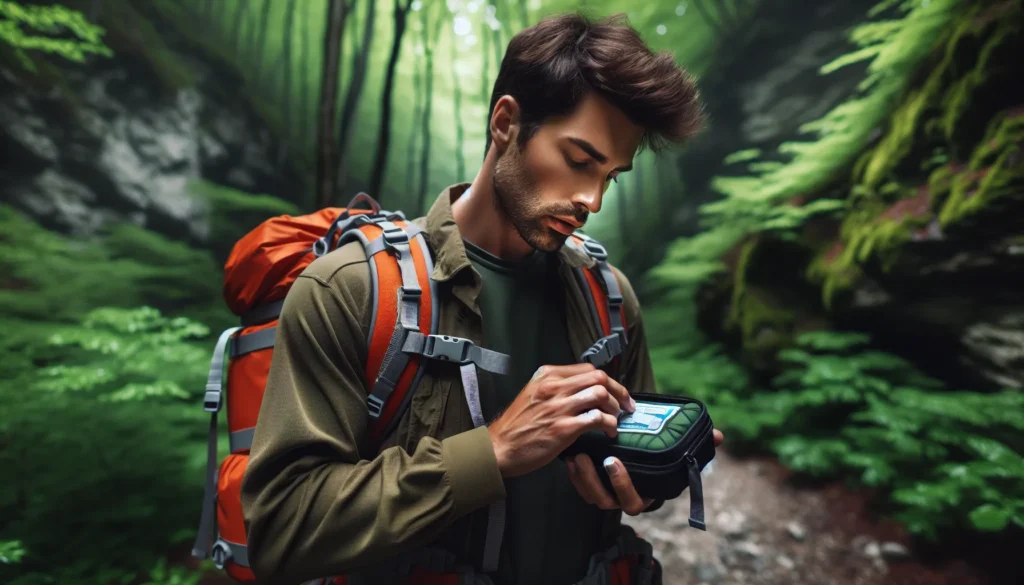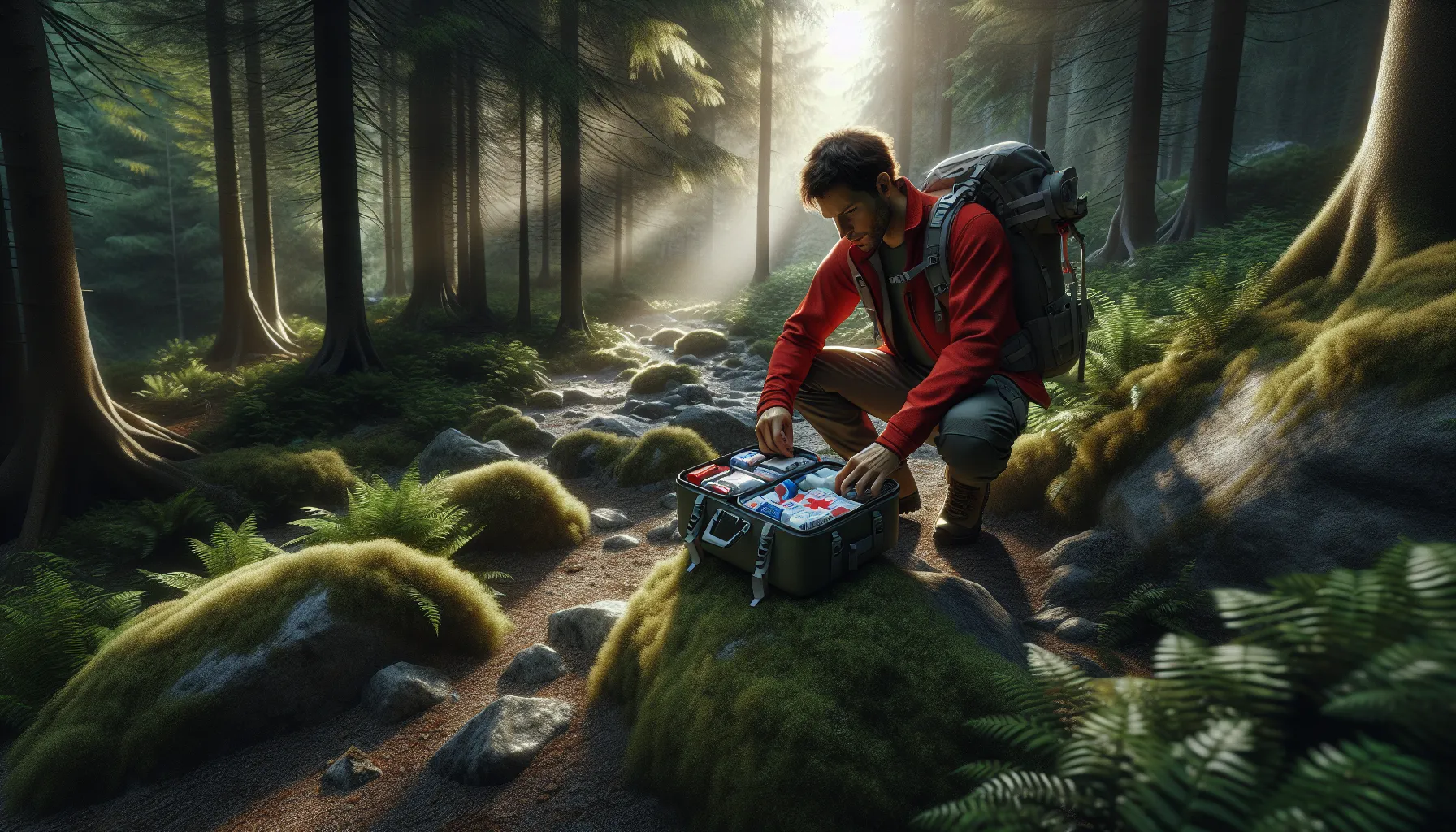Key Takeaways
- A hiking first aid kit is essential for managing minor injuries, emergencies, and promoting safety during outdoor adventures.
- Key components include wound care supplies, medications, tools, and emergency items tailored to your hike’s needs.
- Factors like hike duration, group size, health requirements, and environmental conditions should guide your kit’s contents.
- Pre-assembled kits provide convenience, while DIY kits offer customization for specific trips and personal requirements.
- Regular maintenance, updates, and organized packing ensure your kit remains effective and accessible on the trail.
- Keeping the kit lightweight and in an easily reachable spot boosts preparedness without compromising comfort.
Hiking is one of my favorite ways to connect with nature, but let’s face it—adventures don’t always go as planned. A slip on a rocky trail or an unexpected blister can quickly turn a great day into a stressful one. That’s why having a well-stocked first aid kit is an absolute must for any hiker, no matter how short or long the trek.
I’ve learned over time that being prepared isn’t just about peace of mind—it’s about safety. The right essentials in your kit can make all the difference in handling minor injuries or even emergencies while you’re out on the trail. So, what exactly should you pack to stay ready for the unexpected? Let’s dive into the must-haves every hiker should carry.
Importance Of A Hiking First Aid Kit
Carrying a first aid kit on a hike ensures you’re prepared to handle minor injuries like cuts, scrapes, or burns. These can happen during routine activities such as setting up camp or navigating rough terrain. With the right supplies, you can address these issues quickly and safely.
A well-equipped kit also allows you to manage unexpected incidents, including bug bites, allergic reactions, or sprains. When you’re far from immediate medical help, having essential items like antihistamines or elastic bandages can make a significant difference.
Preparation helps you stay calm during emergencies. Knowing you’re equipped with tools like wound-cleaning materials or pain relievers provides confidence to focus on the situation. It also shortens response time, reducing complications.
A hiking first aid kit benefits both you and your group. Having adequate supplies makes it easier to assist others if they experience injuries on the trail. This contributes to a safer and more enjoyable outdoor experience for everyone.
Key Components Of A Hiking First Aid Kit

When preparing for a hike, having a well-organized first aid kit can make all the difference during unexpected situations. I include these essentials to ensure I’m ready for any minor injuries or emergencies.
Wound Care Supplies
I pack adhesive bandages of various sizes, sterile gauze pads, and medical tape for cuts or scrapes. Antiseptic wipes and antibiotic ointments, like bacitracin, help prevent infections. I include blister pads or moleskin to handle common hiking issues such as friction blisters.
Medications
Over-the-counter pain relievers, such as ibuprofen or acetaminophen, are essential for headaches or muscle soreness. I bring antihistamines for allergic reactions and antacids for stomach discomfort. If there’s a risk of infection, I add oral rehydration salts to address mild dehydration symptoms.
Tools And Equipment
Small tools like tweezers for splinters or ticks and scissors for cutting materials are crucial. A digital thermometer helps monitor fevers, while a compact first aid guide provides reference for unfamiliar situations. I also include gloves to maintain hygiene during wound care.
Emergency Items
I carry an emergency blanket to prevent hypothermia and a whistle to signal rescuers if needed. Adhesive bandage strips with reflective surfaces or glow sticks are useful for marking visibility in low light. Waterproof matches and a small mirror are also handy for survival scenarios.
Factors To Consider When Building Your First Aid Kit

Selecting the right items for a hiking first aid kit depends on several factors. Assessing the hike’s specifics ensures you’re prepared for potential challenges.
Type Of Hike And Duration
Short day hikes may require fewer items than multi-day treks. For example, a brief hike might only need basic wound care supplies and pain relievers, while extended trips demand additional items like blister pads, oral rehydration salts, and an emergency blanket. The remoteness of the hike also matters—more isolated trails necessitate a comprehensive kit.
Group Size And Health Needs
The size and health requirements of the group determine how much and what to pack. For groups, bring extra supplies like bandages and medications. Consider individual health conditions; for instance, include prescribed medications for allergies or chronic illnesses. For children, add kid-friendly treatments like smaller adhesive bandages or a soothing cream for minor irritations.
Environment And Weather Conditions
Environments like forests, deserts, or mountains influence the first aid kit’s contents. Bug repellent and antihistamines combat insect-heavy areas, while sunscreen and aloe vera gel protect against sunburn in arid regions. Wet or cold conditions call for waterproof supplies, thermal blankets, and hand warmers.
Pre-Assembled Kits Vs. DIY Kits

Choosing between pre-assembled and DIY first aid kits depends on your hiking style, experience, and specific needs. Both options have unique benefits and limitations.
Pros And Cons Of Pre-Assembled Kits
Pre-assembled kits offer convenience with a pre-curated selection of supplies. They’re ready to use out of the box, saving time and effort. These kits are ideal for beginners or those unsure about what to pack. Many include basics like adhesive bandages, antiseptic wipes, and pain relievers.
However, pre-assembled kits might not meet all your specific needs. They often include generic items but may lack specialty supplies like prescription medications or gear suited for extreme environments. Overpacking is another drawback since some items might be unnecessary for shorter hikes, adding bulk and weight to your kit.
Advantages Of Customizing Your Own Kit
Customizing a kit gives me control over the contents. I can tailor it to fit the hike’s length, terrain, and weather conditions. For instance, for a winter hike, I add hand warmers and waterproof bandages. On warmer trails, I include sunscreen and extra electrolyte tablets. I can also prioritize essentials for group size or personal health, like specific medications or additional wound care supplies.
DIY kits can be more cost-effective. I avoid paying for items I already own or won’t use, focusing my budget on upgrades like high-quality scissors or an ultralight dry bag. Building my kit ensures that every item is intentional and useful for the adventure ahead.
Tips For Packing And Organizing Your Kit
Packing a first aid kit for hiking requires careful attention to accessibility and organization. A well-organized kit ensures you’re prepared to handle emergencies efficiently while staying mindful of the kit’s weight.
Accessibility And Weight
I keep my first aid kit in an easily reachable spot in my backpack, like a top pocket or an outer compartment. In emergencies, quick access prevents wasting critical time searching through gear. To reduce weight, I choose lightweight items like fabric bandages, compact blister pads, and travel-sized antiseptic bottles. Balancing weight and contents is essential for maintaining comfort on long hikes.
Regular Maintenance And Updates
I regularly check my kit before every hike to ensure all items are in good condition and not expired. Expired medications or damaged supplies can be ineffective. I replace used items promptly, inspect tools for functionality, and update unique supplies, like personal prescriptions, based on the specific needs of each trip.
Conclusion
Having a well-prepared first aid kit is one of the smartest ways to stay safe and confident on any hiking adventure. It’s not just about packing supplies—it’s about being ready to handle whatever the trail throws your way, from minor scrapes to unexpected emergencies.
By tailoring your kit to your specific needs and keeping it organized, you’re setting yourself up for a smoother, more enjoyable outdoor experience. Remember, a little preparation goes a long way in ensuring you can focus on the beauty of the journey rather than worrying about the “what ifs.” Happy hiking!
Frequently Asked Questions
Why is it important to carry a first aid kit while hiking?
Carrying a first aid kit ensures you’re prepared to handle minor injuries like cuts, blisters, or burns, as well as emergencies like allergic reactions or sprains. It provides safety, boosts confidence, and allows you to address issues promptly, especially when you’re far from medical help.
What are the essential items for a hiking first aid kit?
A hiking first aid kit should include adhesive bandages, gauze pads, antiseptic wipes, blister pads, pain relievers, antihistamines, oral rehydration salts, tweezers, scissors, gloves, an emergency blanket, a whistle, and waterproof matches.
How do I customize a first aid kit for my hike?
Consider the type, duration, and location of the hike, group size, health needs, and environmental conditions. Add specific items like prescribed medications, bug repellent, sunscreen, or waterproof supplies based on your requirements.
Are pre-assembled first aid kits good for hiking?
Pre-assembled kits are convenient and a great choice for beginners. However, they may not include all the specific items you need for your hike and could contain unnecessary supplies, leading to overpacking.
What are the benefits of a DIY first aid kit?
A DIY kit allows you to tailor items to your hike, ensuring everything is useful and intentional. It can also be cost-effective, as you can invest in high-quality items suited to your personal needs.
How do I pack and organize a first aid kit for hiking?
Place the kit in an easily accessible spot in your backpack for quick emergency access. Use lightweight, compact items to reduce the kit’s weight and maintain comfort during long hikes.
How often should I update my hiking first aid kit?
Check your first aid kit before every hike. Replace used or expired items, update personal prescriptions, and ensure all supplies are in good condition to maintain preparedness and effectiveness.
What should I include for longer or isolated hiking trips?
For longer or remote hikes, expand your kit with additional supplies like extra medications, a tourniquet, wound closure strips, and more survival tools such as a flashlight, multi-tool, or water purification tablets.
Why are tools like tweezers and scissors needed in a first aid kit?
Tweezers help remove splinters, debris, or stingers, while scissors are essential for cutting gauze, tape, or clothing during emergencies. These tools are crucial for effective wound care on the trail.
How does environmental condition influence a first aid kit?
Different terrains and climates require specific items. For sunny conditions, include sunscreen and lip balm; for wet trails, pack waterproof supplies; and for buggy areas, have insect repellent and antihistamines on hand.

